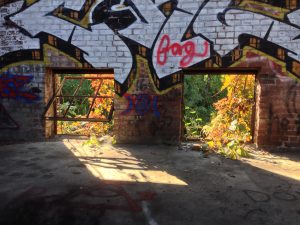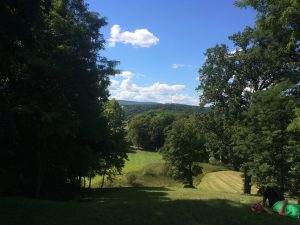Just two miles from the charming town of Beacon, NY, lies an abandoned, decrepit warehouse. Shattered glass, rotten wood, and rusted metal live with with the vines and creepers sneaking in through broken windows. Graffiti coated walls rest among a backdrop of dense woods. Remnants of industrial America blend in, seamlessly, with nature’s aggressive expansion.

Wilderness slowly swallows the old brick works
Dennings Point is the site of a 19th century brick factory, cozily nestled in a gorgeous New York forest on the banks of the Hudson River. The factory served not only as a key manufacturing establishment in the Hudson Valley, but also as an important landmark. Supplying bricks for buildings all over the country – namely the Empire State Building and Rockefeller Center – earned Dennings Point Brick Works its reputation nationwide.
Dennings Point, throughout the years, has written itself in some of the most famous American stories. Said to have been occupied since 4000 BC, it supposedly saw George Washington cross from it to the other side of the Hudson during the Revolutionary War. Whispers claim that Alexander Hamilton, the renowned American statesman and founding father, drafted the beginnings of the famous Federalist Papers here.

Spray painted walls complement the fiery orange leaves
After the factory was shut down during World War II, the site was used as a base for Durisol, a concrete making company, and a manufacturer that produced paper clips. Today, it is home to the Beacon Institute for Rivers and Estuaries, a beautiful building dedicated to water research and ecological conservation.

A 19th century brick manufactured at the site is built into the footpath around the Beacon Institute
Dennings Point will leave you in awe – at the impudence of Man, destroying nature and putting our stamp on the world, and at the power of Nature, who has managed to slowly, broodingly, take back what rightfully belongs to her.
Posted in Uncategorized | No Comments »

















